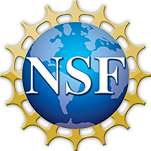| URL | https://www.bco-dmo.org/dataset/763941 |
|---|---|
| Download URL | https://www.bco-dmo.org/dataset/763941/data/download |
| Media Type | text/tab-separated-values |
| Created | March 28, 2019 |
| Modified | June 4, 2019 |
| State | Final no updates expected |
| Brief Description | Radiocarbon [14C] ages of sedimentary organic matter and sedimentation rates for Guaymas Basin and Sonora Margin sediments |
Acquisition Description
Sediment cores were obtained by Piston coring (using commercial PVC core liners) onboard R/V El Puma. The sediment cores were recovered during the RV El Puma cruise in October 2014. Core PO3 is from the northwestern ridge flanks [27°N 37.6759/111°W 52.5740; 1611 m depth], P10 is from ca. 1 mile west of Ringvent [27°N 30.5193/111°W 42.1722 W; 1731 m depth], core P11 is from the center of Ringvent [27°N 30.5090/111°W 40.6860, 1749 m], core P12 is from the upper Sonora Margin [27°N 52.1129/111°W 41.5902, 667 m], and core P13 is from the southeastern ridge flank of Guaymas Basin [27°N 12.4470/111°W 13.7735, 1859m]. Sedimentation rates were not inferred from cores P5 and P6 due to distortions by slumping. Measurements were made on bulk sediment without authigenic carbonate phases, and thus the majority of carbon in the samples is organic carbon produced by primary producers.
Samples selected for radiocarbon analyses were freeze-dried, homogenized, and acidified to remove CaCO₃, allowing for the analysis of remaining organic matter, and preventing the distortion of radiocarbon ages by methane-derived carbonates. Acidification was performed on ~200 mg of sample, which was treated with ~5ml buffered pH 5 acetic acid solution for ~24 hours to dissolve the CaCO₃. Samples were then rinsed with Milli-Q water 6 to 8 times to remove the acetic acid. Acidified samples were then freeze-dried again, re-homogenized and stored for ¹⁴C and ¹³C analysis. Radiocarbon dating was performed at Lawrence Livermore National Laboratory Center for Accelerator Mass Spectrometry, and a reservoir age of 406 years was used before conversion to calendar years using CALIB REV7.1.0. (Stuiver et al. 2019). The d¹³C values of all the acidified samples used for radiocarbon analyses were approximately -20 to -22‰, as expected from marine (primary producers) derived organic matter.
Processing Description
Data notes:
The sedimentation Rate (Sed_Rate) is based on using the youngest and oldest samples to obtain an average for the dated part of the core.
** = outlier
BCO-DMO Processing:
– copied values from merged cells into each row;
– modified column headers (replaced spaces with underscores, renamed standard deviation columns for clarity);
– separated original C14_age column into two: one for the value and one for the stdev.
Instruments
Radiocarbon dating was performed at Lawrence Livermore National Laboratory Center for Accelerator Mass Spectrometry, using the 1 MV AMS system based around a NEC 3SDH-1 accelerator.
An AMS measures "long-lived radionuclides that occur naturally in our environment. AMS uses a particle accelerator in conjunction with ion sources, large magnets, and detectors to separate out interferences and count single atoms in the presence of 1x1015 (a thousand million million) stable atoms, measuring the mass-to-charge ratio of the products of sample molecule disassociation, atom ionization and ion acceleration." AMS permits ultra low-level measurement of compound concentrations and isotope ratios that traditional alpha-spectrometry cannot provide. More from Purdue University: http://www.physics.purdue.edu/primelab/introduction/ams.html
Parameters
unique sample identification or number; any combination of alpha numeric characters; precise definition is file dependent
Inherent uncertainty in the 14C method (+/- years)
Dataset Maintainers
| Name | Affiliation | Contact |
|---|---|---|
| Andreas P. Teske | University of North Carolina at Chapel Hill (UNC-Chapel Hill) | |
| Ana Christina Ravelo | University of North Carolina at Chapel Hill (UNC-Chapel Hill) | |
| Shannon Rauch | University of California-Santa Cruz (UC Santa Cruz) | ✓ |
BCO-DMO Project Info
| Project Title | RAPID proposal: Site characterization cruise to document the active and extensive subsurface biosphere in the Guaymas Basin |
|---|---|
| Acronym | RAPID Guaymas Basin |
| URL | https://www.bco-dmo.org/project/626087 |
| Created | November 5, 2015 |
| Modified | March 13, 2019 |
Project Description
Description from NSF project abstract:
The Guaymas Basin in the central Gulf of California is an active tectonic spreading center overlain with thick, organic-rich sediments. In contrast to typical deep-water, mid-ocean ridge spreading centers that have very focused magmatism and little or no sediment, magmatism in the Guaymas Basis is more broadly distributed. This broadly-distributed magmatism significantly expands the fraction of organic-rich sediments that may be subject to alteration by the magmatic heat and thus it greatly expands the range of environments that support hydrocarbon generation and microbial populations in the sediments. Recognition that magmatism is not confined to the spreading axis, but instead is distributed throughout Guaymas Basin, suggests that models for the natural sequestration of carbon, the formation of oceanic crust, and life in the subsurface in marginal rift basins should be reconsidered as this has implications for the long-term removal of atmospheric carbon dioxide (and hence potential climatic implications). The Principal Investigator of this RAPID proposal is a lead proponent on an International Ocean Discovery Program (IODP) proposal to study this system in depth through scientific ocean drilling. To properly plan this expensive IODP expedition, additional site characterization gained from sediment sampling and seismic data is required. This proposal requests funds for the Principal Investigator to participate on an already planned site survey cruise aboard the Mexican Research Vessel (RV) El Puma. The results from this cruise will provide valuable data, at an exceptionally low investment, to guide decisions about potential future scientific drilling in the Guaymas Basin.
This RAPID proposal requests funds for the Principal Investigator to participate on a Mexican site survey cruise in October 2014 on RV El Puma to collect five-meter gravity cores of an extensive sediment transect across the Guaymas Basin and to integrate sequencing-based microbial community analyses of subsurface bacteria and archaea with biogechemical characterizations of these subsurface sediments. Gravity coring and microbial community analysis will target cold non-hydrothermal sediments as well as off-axis hydrothermally-influenced sediments. The gravity coring campaign and the geochemistry/microbiology studies are coordinated with heatflow measurements and extensive 2D seismic analysis and high-resolution 3D seismic mapping by other planned Mexican and German cruises. This multi-pronged strategy will deliver the additional data and complete the site characterizations that are required to properly plan a potential IODP drilling expedition by the JOIDES Resolution.
Data Project Maintainers
| Name | Affiliation | Role |
|---|---|---|
| Andreas P. Teske | University of North Carolina at Chapel Hill (UNC-Chapel Hill) | Principal Investigator |

